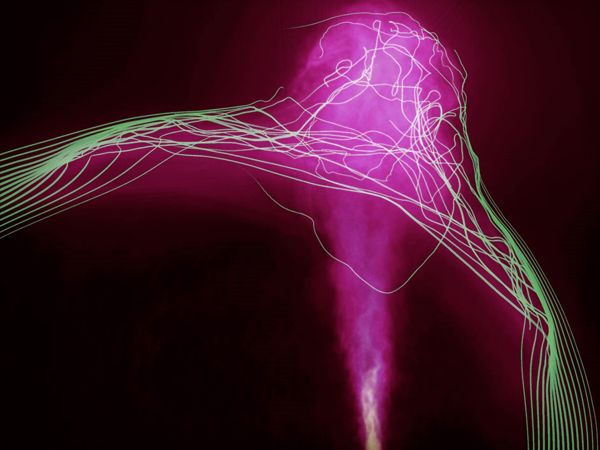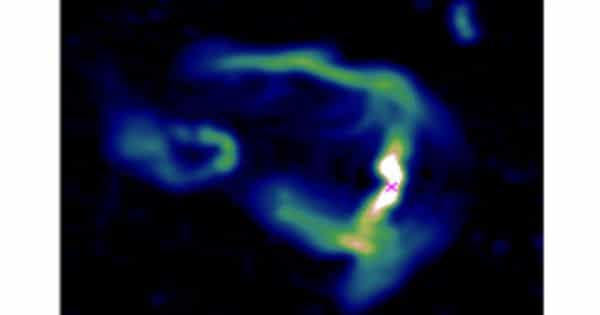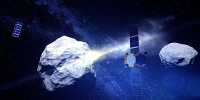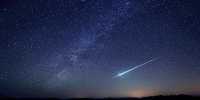According to new observations and simulations, jets of high-energy particles emitted from the central massive black hole in the brightest galaxy in a galaxy cluster can be used to map the structure of invisible inter-cluster magnetic fields. These findings give astronomers a new tool for investigating previously unknown aspects of galaxy clusters.
The Hubble constant is typically measured in two ways by astronomers. One method is to use the cosmic microwave background, which is the light that was released shortly after the Big Bang in the distant universe. The other makes use of nearby supernovae and other stars. These approaches currently differ by a few percentage points. For each megaparsec, the new value from FRBs expands at a rate of approximately 62.3 kilometers per second (about 3.3 million light-years). While it is lower than the other methods, it is possibly closer to the value from the cosmic microwave background, or CMB.
Bow shocks and wakes in dilute plasma are created as clusters of galaxies grow through collisions with surrounding matter. The plasma motion caused by these activities has the potential to drape intra-cluster magnetic layers, forming virtual magnetic force walls. However, these magnetic layers can only be seen indirectly when something interacts with them. Because such interactions are simply difficult to detect, the nature of intra-cluster magnetic fields remains unknown. A novel approach to mapping and characterizing magnetic layers is desperately needed.
New observations and simulations show that jets of high-energy particles emitted from the central massive black hole in the brightest galaxy in galaxy clusters can be used to map the structure of invisible inter-cluster magnetic fields. These findings provide astronomers with a new tool for investigating previously unexplored aspects of clusters of galaxies.
Haruka Sakemi, a graduate student at Kyushu University (now a research fellow at the National Astronomical Observatory of Japan — NAOJ), led an international team of astronomers who used the MeerKAT radio telescope in South Africa’s Northern Karoo desert to observe MRC 0600-399, a bright galaxy in the merging galaxy cluster Abell 3376.
MRC 0600-399 is known to have unusual jet structures bent to 90-degree angles and is located more than 600 million light-years away in the direction of the constellation Columba. Previous X-ray observations revealed that MRC 0600-399 is the core of a sub-cluster that penetrates the main cluster of galaxies, indicating the presence of strong magnetic layers at the main and sub-cluster boundaries. Because of these characteristics, MRC 0600-399 is an ideal laboratory for studying interactions between jets and strong magnetic layers.
MeerKAT, a forerunner of the Square Kilometer Array (SKA), has high sensitivity and reasonable resolution for studying ICM. The MeerKAT is a cutting-edge 64-dish (each 13.5m in diameter) radio interferometer located in South Africa’s Northern Karoo desert.

The MeerKAT observations revealed previously unseen jet details, most notably a faint “double-scythe” structure extending in the opposite direction from the bend points and forming a “T” shape. These new details show that this is a very chaotic collision, similar to a stream of water colliding with a pane of glass. To explain the observed jet morphology and possible magnetic field configurations, computer simulations are required.
Takumi Ohmura, a graduate student at Kyushu University (now a research fellow at the University of Tokyo’s Institute for Cosmic-Ray Research – ICRR), and other members of the team ran simulations on NAOJ’s supercomputer ATERUI II, the world’s most powerful computer dedicated to astronomical calculations. The simulations assumed an arch-like strong magnetic field while ignoring messy details like turbulence and galaxy motion. This simple model matches the observations well, indicating that the magnetic pattern used in the simulation accurately reflects the magnetic field intensity and structure around MRC 0600-399.
More importantly, it shows that the simulations can accurately represent the underlying physics, allowing them to be applied to other objects to characterize more complex magnetic field structures in galaxies clusters. This gives astronomers a new way to understand the magnetized Universe, as well as a tool for analyzing higher-quality data from future radio observatories such as the SKA (the Square Kilometre Array).
Scientists do not yet have a complete understanding of the sun’s magnetic field, including how it is generated and its structure deep within the sun, but they do know a lot. For one thing, the solar magnetic system is known to drive the sun’s 11-year activity cycle. The sun’s magnetic field smoothes out slightly with each eruption until it reaches its most basic state. At that point, the sun is in a state known as solar minimum, in which solar explosions are rare. From there, the sun’s magnetic field becomes more complicated over time, peaking at solar maximum of 11 years after the previous solar maximum.














